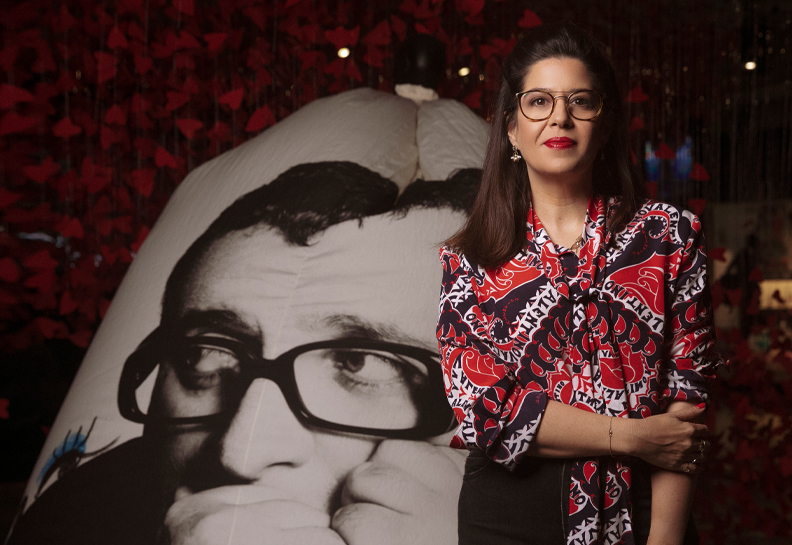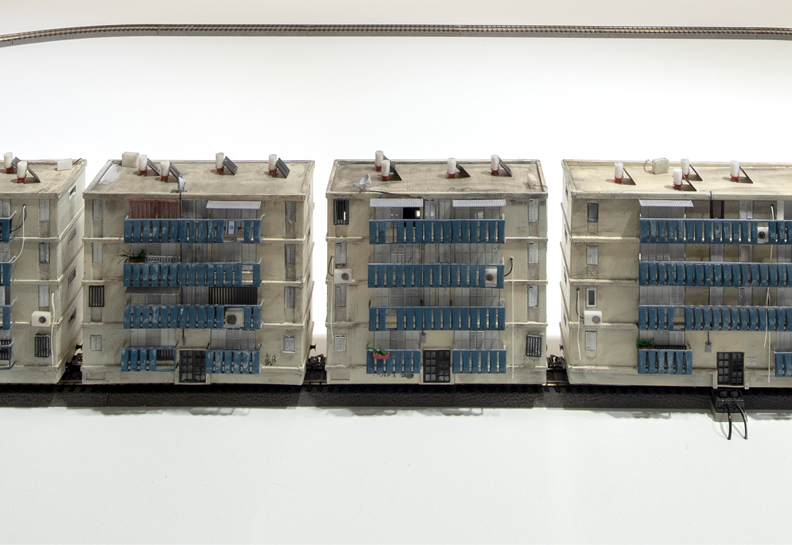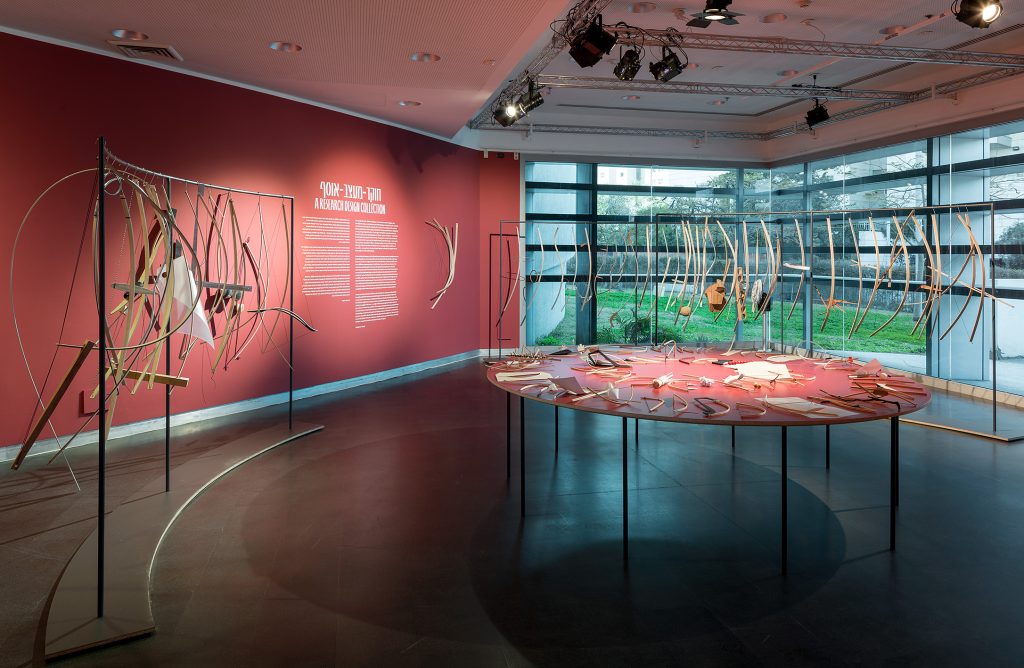Good Listeners by Mushon Zer-Aviv presents and illustrates what goes on without our knowledge when we browse the internet.
“Let’s say a woman is job hunting and discovers she’s pregnant, and quite naturally searches for information on the internet about pregnancy. The search process is stored by the search engine and divulged to third parties who are free to make extensive use of this information, even at the expense of the same pregnant woman’s prospects of finding a new job. The decisions others make for users mandate a critical debate on the aestheticization of information, the glorification of technology and the erosion of privacy”. This is the example Mushon Zer-Aviv gives when attempting to explain the influence wielded over the private user by web designers and developers. Good Listeners by Mushon Zer-Aviv was specially commissioned for the Decode: Digital Design Sensations exhibition currently showing at Design Museum Holon. It was chosen by the Porter Foundation and the Victoria & Albert Museum as part of the representation of Israeli designers in the exhibition. Unlike many other works shown in the exhibition, Good Listeners presents and illustrates what goes on without our knowledge when we browse the internet, and encourages us to think about and question the blind faith we place in the various internet websites.
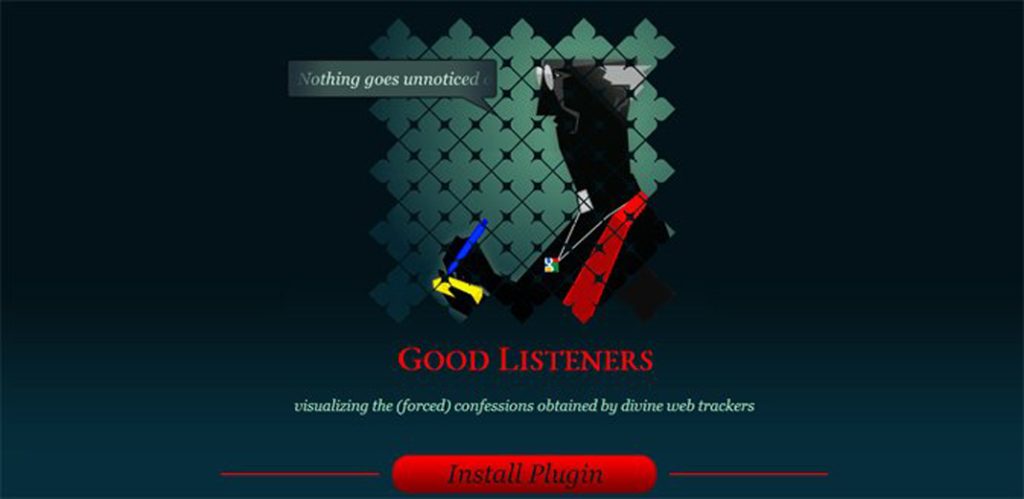
Good Listeners poses the question of on what basis do we as internet users enable third-party services to decide for us what information about us will be collected and at what level and standard of detail this information will be available to other parties without asking us or requesting our consent. The allegorical language of the project, in the form of a window simulating a confessional that opens on the browser, creates an analogy for religion and the godlike presence of different entities on the internet, and creates a powerful link between technology, religion, and a particular agenda. If we ponder for a moment Google’s slogan “Do No Evil” alongside its patronistic attitude and lack of transparency, then the visual expression of the confessional is endowed with frightening and even dangerous significance. “People aren’t aware of the fact that Google has information on user browsing habits in approximately 87% of all internet pages”, Mushon stresses.Privacy and context stands at the basis of the project, which is a browser plug-in that visually and sonically displays to the user the information being collected about him while he browses, searches for information, or watches online movies.
Mushon Zer-Aviv graduated in 2002 from the Department of Visual Communication at Bezalel Academy of Arts and Design, Jerusalem. Even before he graduated he engaged in digital design, which we take for granted today, but only a little over a decade ago was a new and developing field. Mushon describes what digital design has done for visual communication, which until then engaged in print, television, and other types of centralist media, as a “sharp blow resembling that of the revolution brought about by Johannes Gutenberg’s invention of the printing press“. “The change effected in the world by digital design preoccupies me as a researcher and creator. I try to understand what has changed, what is changing, and I engage in questions of communication, society, and new media, collaboration, and open code. Why there are areas where we see a high level of collaboration, for example open code and text, and not in other areas”. The visual aspect of this research can be seen in a project he initiated with Galia Offri, called WikipediaIllustrated.
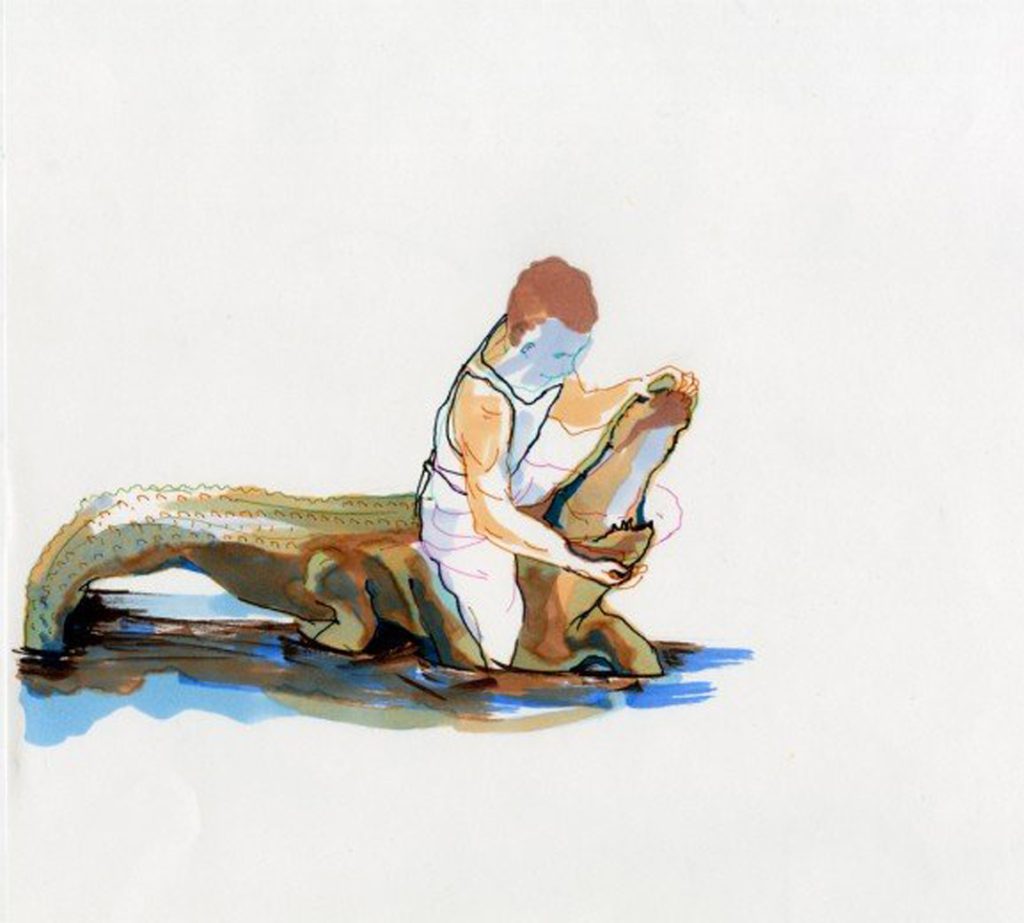
Visual communication was not Mushon’s first choice. Since he’d been drawing comic strips and writing about music for Penguins’ Perversions, he wanted to study in the Department of Fine Arts at Bezalel. He intended to become a professional comics artist, but when he discovered there was no comics program in the Department of Fine Arts, but only in the Department of Visual Communication, he enrolled there.After graduating and collaborating on a project with the Israeli Center for Digital Art, Galit Eilat, who until recently directed the Center, proposed opening a graphic and digital design studio that would operate from the complex in which the Center is located. After working for a time with another designer, he looked for someone new to work with, and was exposed to the posters and unique style of Guy Saggee, his partner in Studio Shual (for the sake of full disclosure – Studio Shual was chosen by Design Museum Holon to carry out the graphic design for the various exhibitions shown at the Museum since its establishment), in the streets of Tel Aviv. Following a quick Google search they met and set up a studio that engages in print and digital design. The name Shual was chosen after a brainstorming session that also contemplated somewhat more esoteric names. Shual (=fox, in Hebrew), a nonsense word Mushon uses liberally, was chosen because the fox is an aesthetic and cunning animal, and also to paraphrase an old Jewish saying, the two would much rather be a head of the foxes than a tail for the lions…After working in the studio for three years, Mushon went to New York to study for his masters in new media at ITP, Tisch School of the Arts, New York University. His final project, ShiftSpace created a platform for parasitic social applications in which users can modify websites and share these modifications with other users.
In 2007 Mushon was invited to participate in an exhibition curated by Paola Antonelli, Design and the Elastic Mind, at MoMA in New York. The project Mushon and Dan Phiffer were invited to present is called Atlas Gloves, a DIY hand gesture interface for Google Earth comprising freeware, ping-pong balls, LED lamps, and strips of elastic material (total cost, less than $10). The interface enables users to use hand gestures (registered by a webcam and translated into mouse movements) to control Google Earth. This was the first collaboration between Mushon and MoMA.
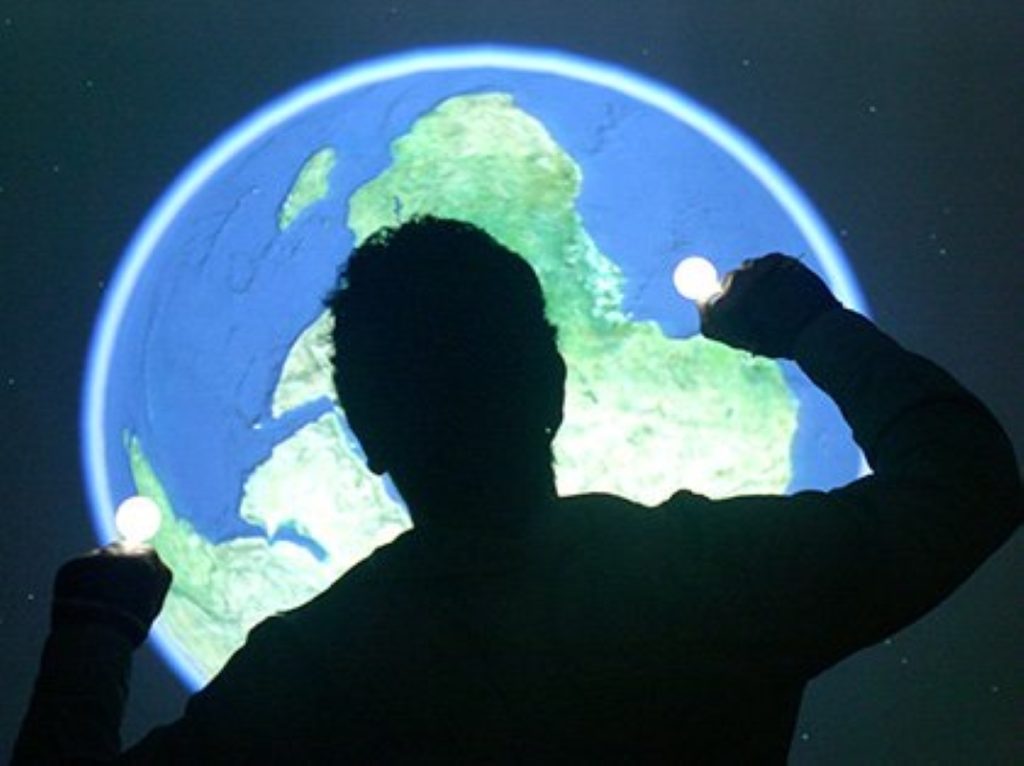
At the end of the exhibition, Mushon was approached by MoMA to take part in redesigning their website and building social tools for them (based on his ShiftSpace project) that would enable visitors to the website to create personal collections and exhibitions and share them with other visitors.
The time he spent in New York, far away from Israel, intensified and strengthened Mushon’s social/political awareness and criticism in general, and with regard to Israel in particular. Aspects of this criticism are expressed in the website he dedicated to the Good Listeners project in which anyone can download and install the Good Listeners browser plug-in for free.
Based on the research aspect of his work, I ask for his opinion of Facebook. According to Mushon, social networks flatten relationships and compel us to conduct virtual relationships in a particular way. “There’s a big difference between the nuances of relationships and what can be represented by means of Facebook nowadays, and in order to bridge this difference ‘friends’ have to flatten their interaction and the depth of their relationships on the social network”.In addition to flattening, the social interfaces and interpersonal communication channels are becoming increasingly more layered and complex. Mushon notes the fact that if not so long ago the individual had to work hard to be heard in public, today the trend has been reversed and the public has become the default, and as a result we have to work hard to limit context and protect our privacy.The change that has occurred in society with the advance of technology can be illustrated by means of two equations that Mushon presents, the first which was and still holds true: technology = money = power (for example: the police user interface in the futuristic movie Minority Report). The second, which expresses the social change societies are undergoing by means of technological change: technology = not necessarily a lot of money = decentralized power (for example: the parallel interface he created for Google Earth at low cost and high availability). Certain expressions of this equation can also be identified in the revolutions that have recently taken place and continue to take place around the world.And in the spirit of the revolutions I ask Mushon if he has a message he would like to convey: “Today technology is driven by the market, science, and the army, all the more so in Israel. At the same time, culture is attempting to keep up and is in effect being led by technology. The mission of designers today is to create a situation whereby culture leads technology. The way to achieve this is by creating from a humanistic perspective that engages in questions about society and relationships, and strives to design a reality that will enable reversal and change in the present balance of power”.
